
If you’re a flower lover like ourselves, chances are you’ve been DIYing your own bouquets for years and are basically an amateur florist, am-I-right? Whether you’re a plant master or newbie gardener (or can’t keep a plant alive), growing stunning flowers can be a difficult task.
Luckily, horticulture guide Gardening Chores performed a study to analyze America’s favorite flowers à la Google searches and gave us plenty of tips on how to grow each flower successfully, so your garden will be bursting with color before you know it
1. Lavender
Not surprisingly, lavender is America’s favorite flower with 69,430 searches per year. Its delicate purple flowers and wonderful fragrance provides a welcome shock of color to any space and is great for pollinators. Lavender grows best in bright, dry conditions in not very fertile soil with good drainage.
“Lavender provides many benefits to the area in which it is grown and can thrive both outdoors and indoors with proper care. From its widely acknowledged pleasant fragrance to its beautiful violet flowers, it provides a welcoming space for pollinators, and acts as an excellent repellant of nuisance garden insects, such as mosquitoes and ticks,” says Amer Noyes, a horticultural expert at Gardening Chores.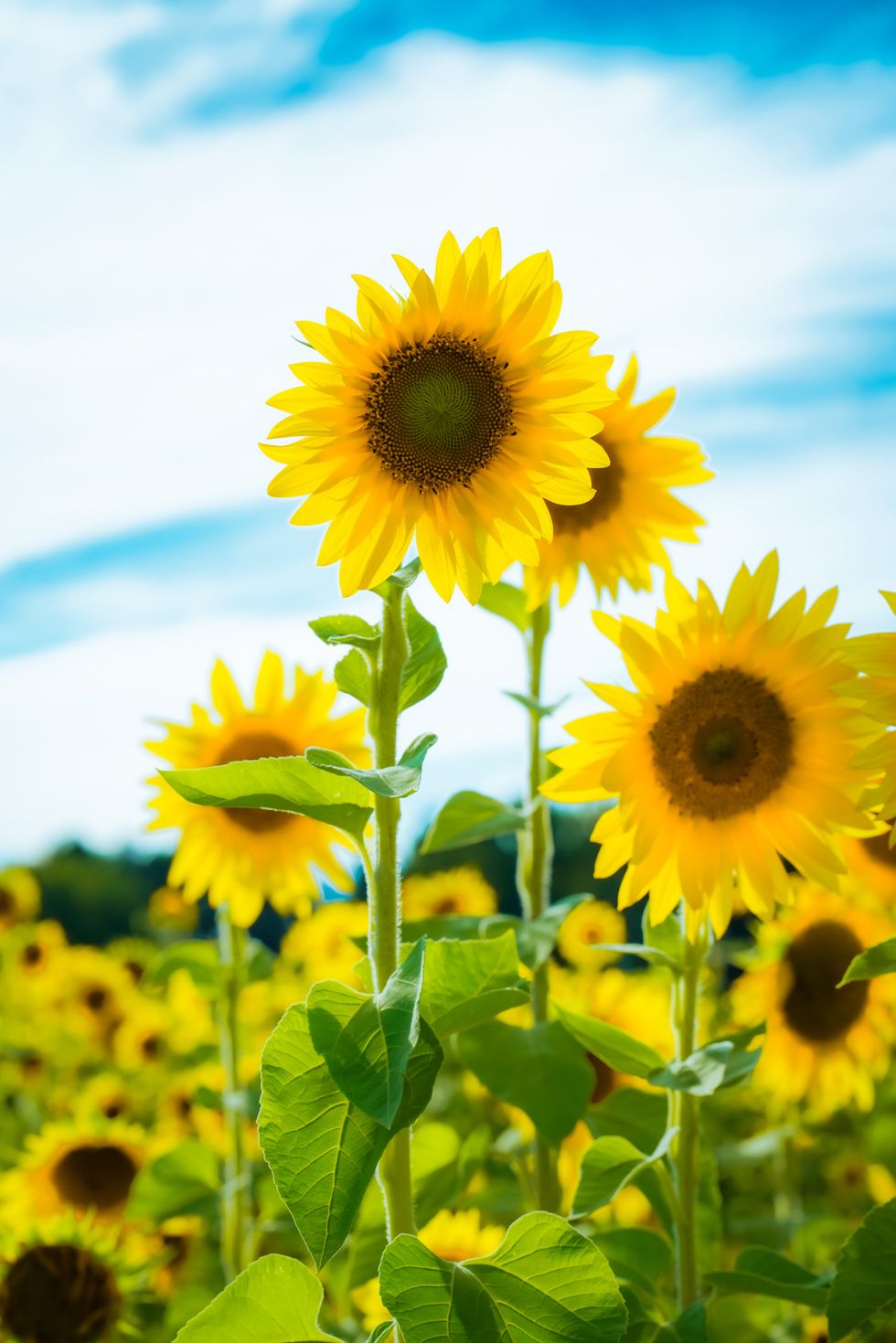
2. Sunflower
The common sunflower’s towering height, bright yellow outer petals and its large, sun-following flower head make it a magnet for pollinators, both big and small.
“The common sunflower is an annual flower, meaning that it dies after one growing season, which is the period from germination to seed production,” Gardening Chores shared. “It grows best in full sun or partial shade, in average fertile soil with good drainage.”
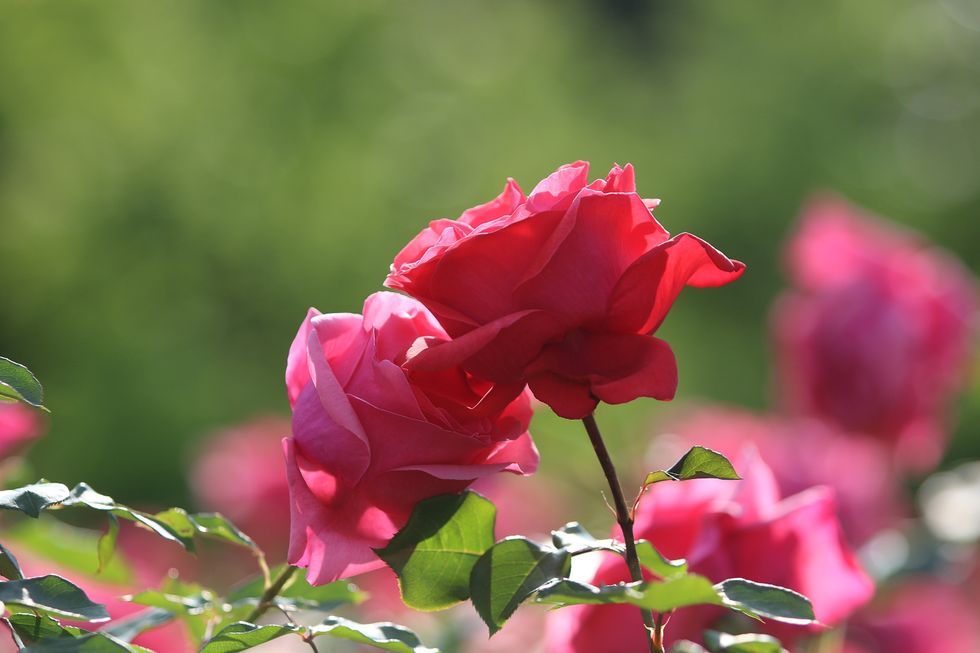
3. Rose
Synonymous with romance and passion, it appears America’s love extends to roses as well with 41,030 searches per year.
“There are more than 300 naturally occurring rose species and tens of thousands of cultivated varieties,” Gardening Chores commented. “Generally, roses come in three types: climbing, groundcover, and shrub. The sheer variety of species can seem overwhelming, but it means there is likely to be a variety to suit whatever space one might have. In general, roses have large, vibrant flowers that range in color from whites to yellows and reds, and they produce a pleasant scent that enhances the space they are in.”
“Roses generally grow best in full sun, with soil of medium moisture and a pH ranging from neutral to slightly acidic,” Gardening Chores continued. “However, specific types of roses can tolerate conditions outside of this range.”

4. Peony
The vibrant peonies (Which, fun fact, has 33 unique species!) are large and range in color from the typical pink to reds, purples, yellows and whites.
These fragrant flowers “are a type of perennial plant that bloom briefly in late spring and early summer. Perennial plants are categorized as those that continue to grow over more than two years,” said Gardening Chores. “Peonies grow best in full sunlight or partially shaded areas that receive a lot of afternoon sun in the summer. They are also quite particular about the soil they grow in, preferring loose, well-draining, fertile, rich soil.”

5. Hydrangea
Famous for their large blooms in striking colors, Hydrangeas “are reliable bloomers that don’t require much maintenance to provide beautiful color to [any] space from spring through to fall,” Gardening Chores shared. “One fascinating characteristic of hydrangeas is that their blooms can change color depending on the pH of the soil they are growing in, with more acidic soil producing blue flowers and more alkaline soil producing pink flowers.”
Gardening Chores continued, “hydrangeas grow best in full sun, although areas with afternoon shade will be preferred in hotter climates. They also prefer rich soil that is well-drained and moist. Remember that hydrangeas grow quickly, and can grow to be very large, with some having a spread of up to ten feet, so make sure to plant them in a space that can accommodate this.”

6. Dahlia
The daisy-adjacent dahlia is the national flower of Mexico with more than 57,000 varieties and 27,090 searches per year. Their blooms provide amazing bursts of color in many shapes and sizes from mid-summer into fall, with a wide range of colors.
With 8 general categories of dahlias (decorative dahlias, pompon and ball dahlias, cactus and semi-cactus dahlias, anemone and collarette dahlias, mignon dahlias, single dahlias, peony and orchid shaped dahlias and waterlily dahlias), this wide selection allows plenty of flexibility in incorporating dahlias into your home and/or garden.
According to Gardening Chores, “dahlias generally prefer full sun, with some varieties tolerating partial shade in warmer climates. They also tend to prefer well-drained soil. If you live in a colder climate, you can still grow dahlias despite them not being cold hardy. Once the blossom is over, cut down your dahlias to the ground, uproot the tubers, and dry them. You can then store them in a cool, but not cold, dry place to be able to plant them again next spring.”
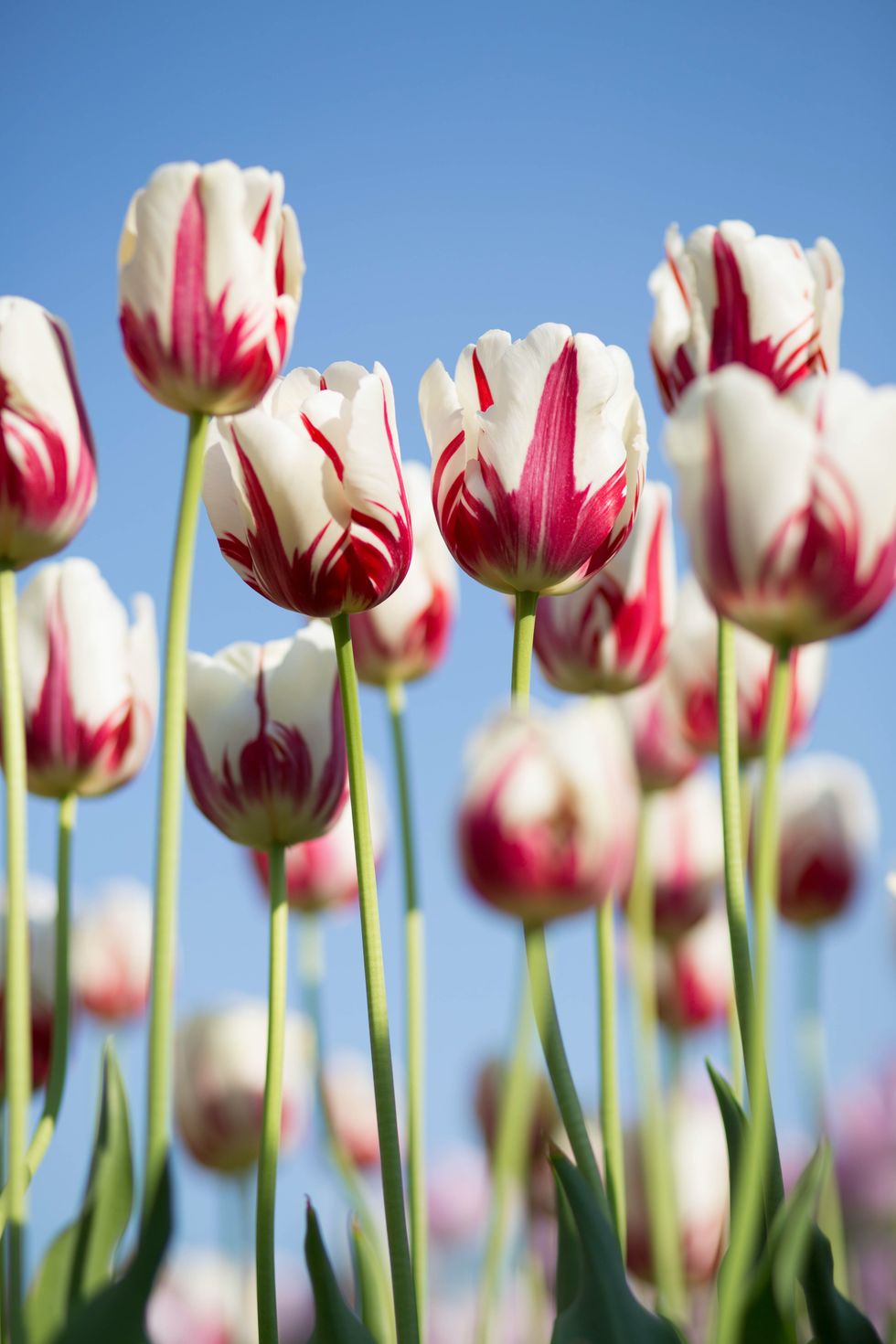
7. Tulip
Tulips provide a rainbow of springtime blooms, generally growing best in full sun conditions with “fertile, well-drained, evenly humid loam, chalk, or sand-based soil with the soil pH ranging from mildly acidic to mildly alkaline,” said Gardening Chores.
“Tulips require plenty of attention to return year after year. Once the bloom is spent, deadhead the tulip so that it diverts most of its energy to the bulb, allowing it to remain healthy for the next year,” Gardening Chores continued. “After all the leaves have dried, gently remove the bulb from the soil using your hands or a small fork, then dry the bulb in the sun. Once dried, store the bulb in a cool, dark, dry, and ventilated place for re-planting around the middle of October for the following spring.”
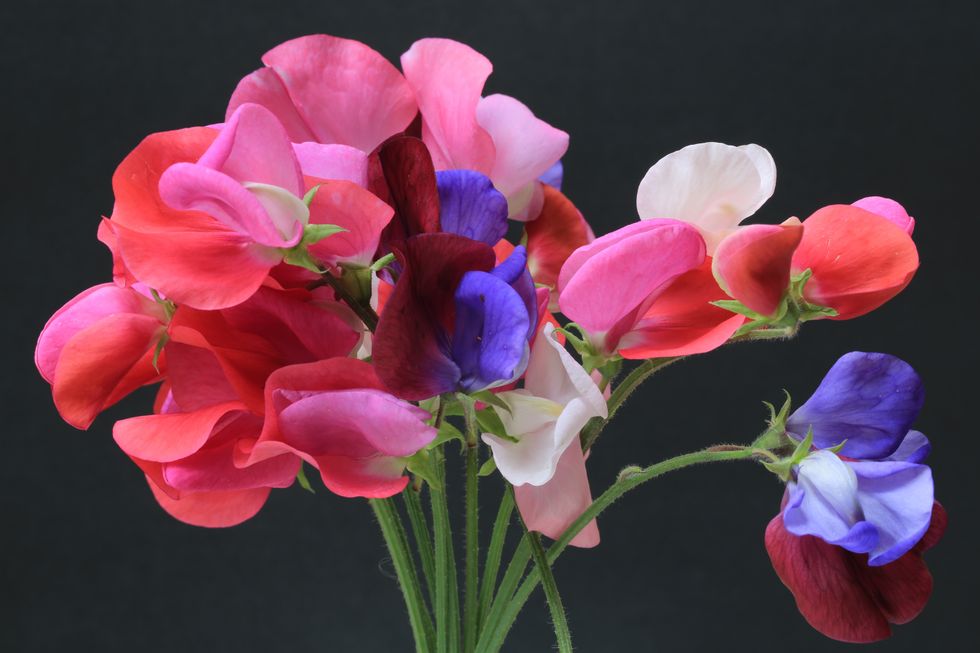
8. Sweet Pea
Sweet peas are annual climbing (and frequently poisonous) plants known for their bright flowers, ranging from their original wild purple to various shades of blue, pink, purple, and white, often in pastel colors.
“Depending on the climate in which they are planted, sweet peas can survive from November in mild winter climates, to very late winter and early spring when the ground is dry enough to work in climates where frosts occur regularly,” said Gardening Chores. “Sweet peas can also be grown indoors to begin with, then moved outside as the weather permits. Their buds prefer full sun, and their roots prefer shade, which can be provided by planting low-growing annuals in front of them. They prefer well-fertilized, moist, well-drained soil with an alkaline pH.”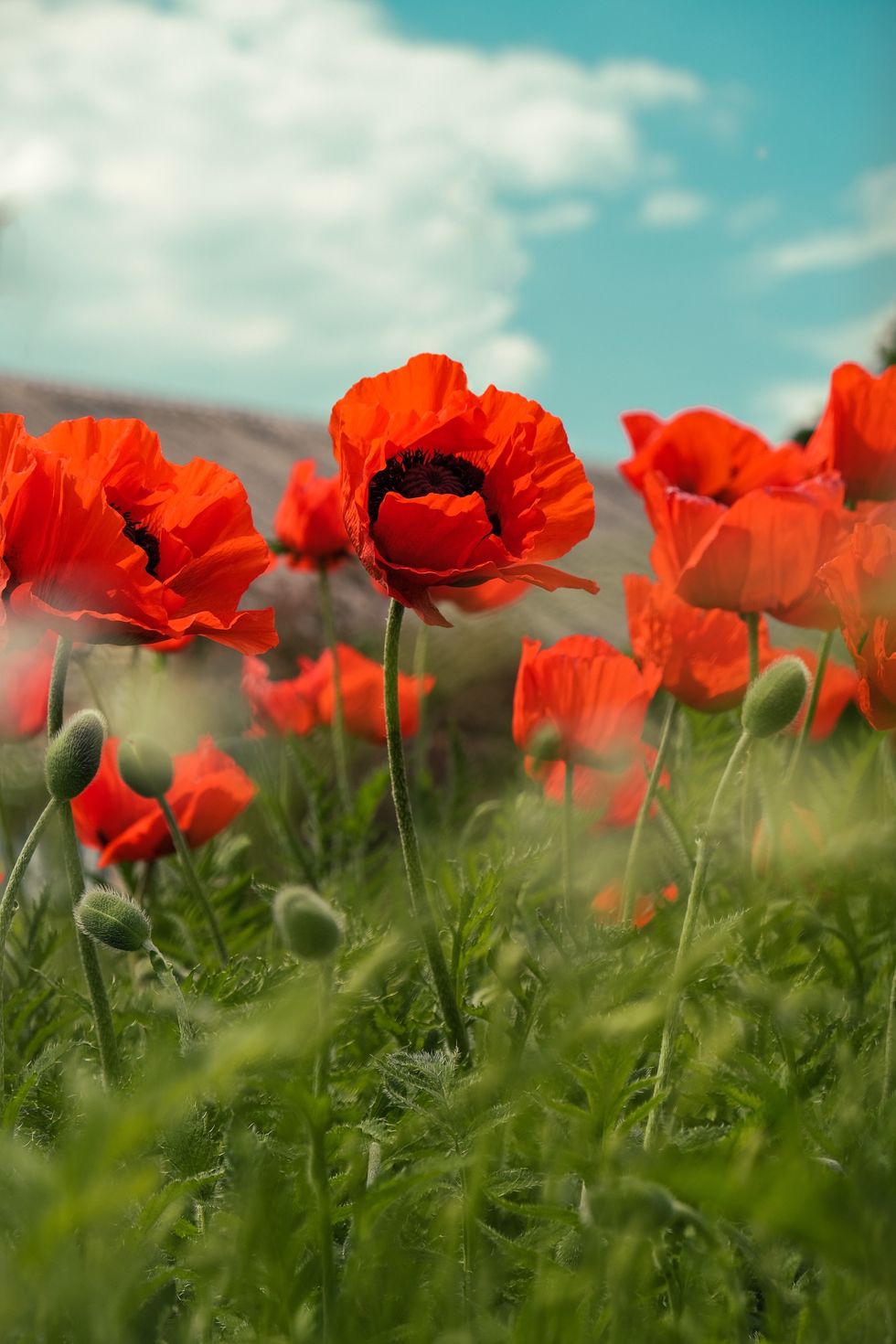
9. Poppy
Poppies come in a wide variety of colors and usually bloom from spring into early summer in temperate zones. With 17,360 searches per year, poppies “generally prefer full sun, with fertile and organically rich, well-drained, medium humid to dry loam, chalk, clay, or sand-based soil, with a soil pH that is mildly acidic to mildly alkaline,” shared Gardening Chores.

10. Clematis
America’s tenth most popular flower is the clematis, which has 300 natural species with countless varieties and 16,180 searches per year.
According to Gardening Chores, “clematises are a species of climbing plants often split into three groups: early bloomers, repeated bloomers, and late bloomers. Group one clematises produce flowers on old wood and blossom in spring. Group two starts blooming in late spring to early summer on new and old wood, continuing throughout summer, sometimes into fall. Group three only produces flowers on new wood and starts blooming later in summer, usually lasting into fall.”
“In general, clematises prefer full sun or partial shade, with soil that is well drained and medium humid loam, clay, chalk, or sand-based soil with a pH from neutral to mildly alkaline,” commented Gardening Chores.
So there you have it, B+C gardeners! Excuse us while we go tend to our seedlings.
Stay updated on the latest home trends with Brit + Co.
Header image courtesy of Eugenia Clara / Unsplash.
0 Commentaires